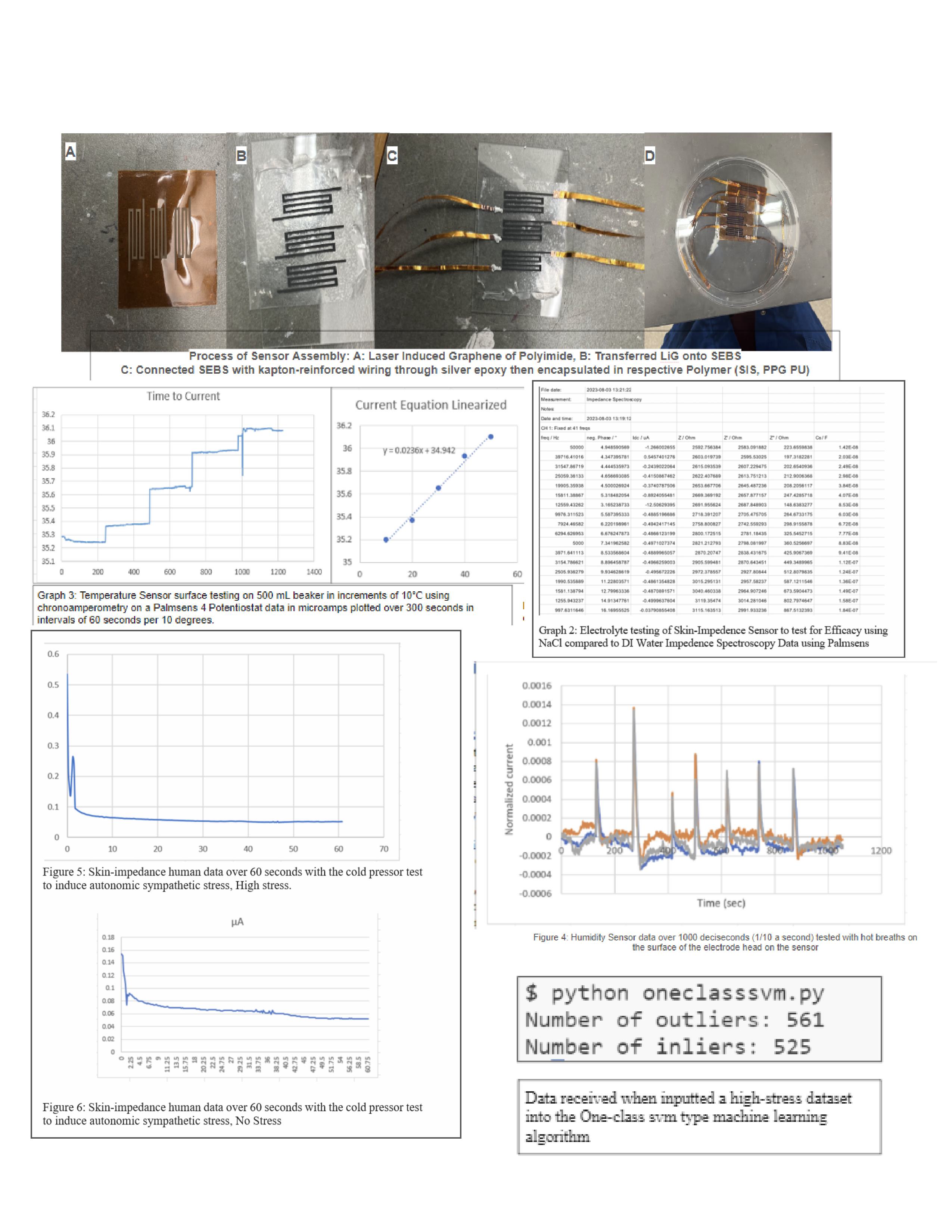2024 AIChE Annual Meeting
Stretchable, Skin-Conforming Laser-Induced Graphene Sensor Array for Non-Invasive Stress Monitoring in Mental Health Applications
About one in four American adults suffer from mental illness with over half of them not receiving any treatment or diagnosis. The average time between initial symptoms and treatment sits at around eleven years. Roughly ten percent of Americans adults suffer from serious mental health issues with half reporting serious consideration of suicide. This number is only rising with the mental health crisis at it’s all time high, hitting teens and young adults the hardest. People afflicted by mental illness suffering severely with severe risks of cardiovascular and metabolic diseases, substance abuse, unemployment, dropout rate, and more. Stress is one of, if not the leading cause of mental health disorders, and requires significantly more awareness on it’s negative ramifications. Initial diagnosis and monitoring of mental illness is especially difficult due to the financial and social repercussions of such actions. Therefore, there is an urgent need to develop a new device, one that is highly precise in it’s measurement, affordable, portable, and multifaceted. Laser-Induced Graphene is at the forefront of material science in its excellent conductivity and properties. Due to the porous nature of graphene, sensor-liquid interfacing is facilitated through the high amount of contact the liquid has with the graphene. These properties allow for graphene to be an excellent electrode for a electrodermal skin-conductance/impedence sensor, the premier method for stress detection and monitoring for psychologists. Anxiety and extreme levels of stress rise the body temperature, and increases perspiration significantly, both of which can be tested using similar resistance sensor technology in a compact format. These sensors are created through elastomeric encapsulation of Laser-Induced Graphene (LIG) and other polymers such as styrene-isoprene-styrene (SIS) to optimize their specific sensing properties. A skin-impedance sensor for electrodermal activity measurement, a temperature sensor for detecting stress-induced thermal changes, and a humidity sensor for monitoring perspiration levels was created in order to monitor stress through a holistic metric of the three factors. Testing for the skin impedance sensor was conducted with comparison of a electrolyte-water solution and a DI water control to establish the efficacy of the sensor. Afterwards, the skin impedance sensor was tested on myself using the cold pressor test to induce a sympathetic autonomic stress response that was recorded in comparison to a control standard state. The results received for the temperature sensor demonstrated a linear response (r² = 0.9465) across a range of 0-50°C. The humidity sensor registered spikes of 8*10-4 and the skin-impedence sensor registered a significantly sharper curve, taking 6.75 seconds to reach 0.0683 microamps within the simulated stress compared to 60 seconds for 0.0682 microamps for the control. This developed sensor array provides immediate applications for medical usage for mental health monitoring in a precise, skin-comforming, cost-effective, portable device that is easily accessible. Integration of these sensors was achieved through a custom-designed printed circuit board assembly (PCBA), utilizing a parallel circuit design for multiple channel measurements. The system operates at low voltage (< 0.5 V) and employs a Wheatstone Bridge configuration to minimize noise and inter-sensor interference. Initial results indicate promising performance, but requires further developments for consistency. While refinement is needed, this technology shows potential for immediate applications in medical and mental health monitoring, offering a precise, skin-conforming, and cost-effective solution for stress assessment. This research contributes to the growing field of wearable bioelectronics and demonstrates the potential of advanced materials in addressing critical healthcare challenges. Future work will focus on large-scale validation studies and the development of robust data analysis algorithms to enhance the system's diagnostic capabilities.


